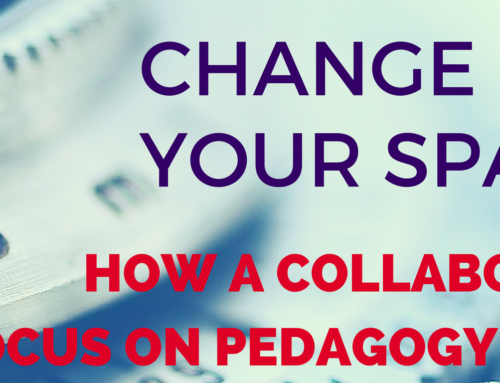Whiteboard tables are being introduced into progressive classrooms and schools all over the world. The movement towards writeable tables is driven by a desire to create spaces that enrich collaboration and empower visible thinking. Teachers want them and students love them. But what are the benefits of this radical (but sensible), progressive (yet in hindsight – almost obvious) and impactful change towards writeable whiteboard tables?
Embarking on the change from traditional ‘single serve’ desks to collaborative whiteboard tables can feel like a grand experiment. It is certainly a break from the status quo. Change can be threatening: many teachers want to shake up their classrooms but are unable to move forward due to real or anticipated blocks. Some teachers worry about requesting to remove “perfectly good” existing furniture and purchase something new. Budgets in schools are frequently tight.
In our experience, deploying writeable surfaces for students in classroom spaces is a relatively quick and cost-effective way to utilize the potential that our learning environments hold. Indeed, teachers have approached the whiteboard table movement with some interestingly different methods (see below).
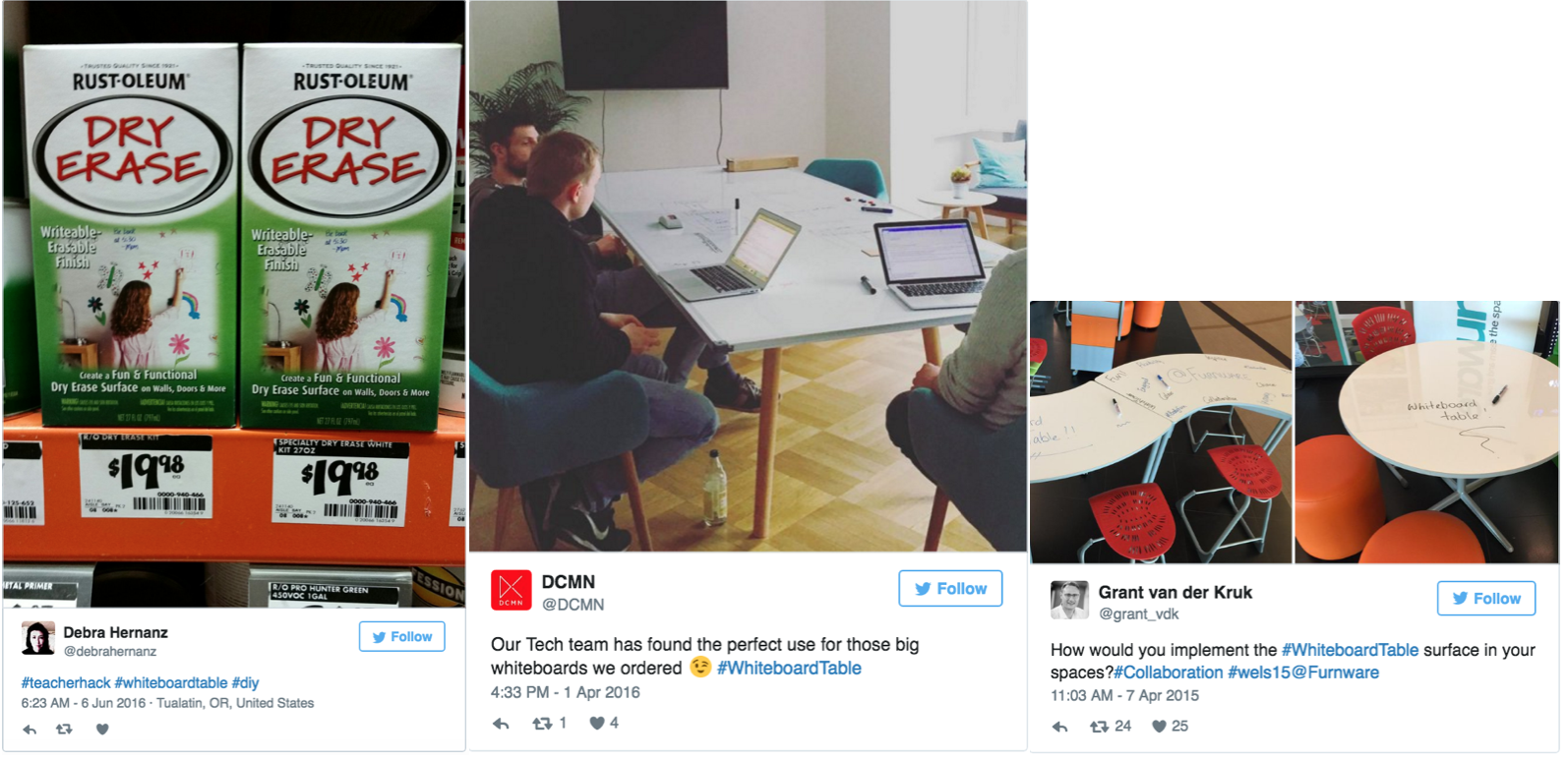
Shared on Twitter: Dry Erase writeable paint vs. a ‘regular’ whiteboard with table legs attached vs. commercially produced furniture by Furnware.
Learning environments contain affordances (think: untapped potential) that can be utilized to enhance teaching and learning. Keen-eyed educators can find ways to promote learning by making judicious tweaks to their classrooms. Transforming desks into writeable workspaces is an example of how a small change can have a big impact.
But can we be sure that introducing writeable tables into learning environments is more than just a fad?
A Case Study: The Impact of Whiteboard Tables
Whiteboard tables were added as a part of classroom redesign at an international school. In a hallway discussion with the school’s Director we were asked which aspect of all the work completed most impacted student learning. The answer came quickly. It was the whiteboard tables.
@KlahnAmanda #Beebots + Marker + #Whiteboardtable = cool https://t.co/aCDiv5xURw whats next spirolaterals?http://t.co/M23beKJzI0 #mathschat
— Nathaniel Atherton (@nat_atherton) November 28, 2014
Hundreds of students have now studied in the school’s new-look classrooms during the past two years. In fact, the redesign has become the “new normal” for the students, teachers and parents in the learning community. So what do they say about this shift?
Students Say:
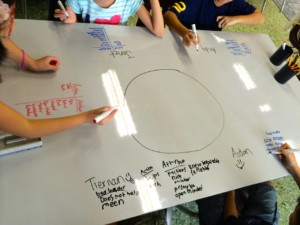
Photo by Dylan Meikle Copyright © 2015
“
“Whenever you need to write things down you can. You save paper because you can take a screenshot of it if you need to keep it. It will help you remember stuff better. When you do math it is easier, the whiteboard table is bigger”
“You can use the tables to draft things and change them when you see it wasn’t really right” ~ Grade 5 students interviewed for this post, 2016
Educators Say:
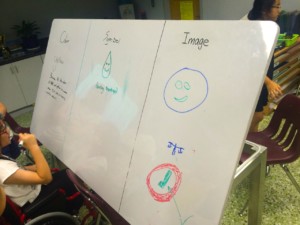
Photo by Dylan Meikle Copyright © 2015
In original research undertaken by the author for a masters course on learning spaces, teachers were asked to identify the impact of the whiteboard tables. Here are some of their comments:
“I use flip-up tables that students interact with as different focal points during learning engagements, rather than always facing the front of the room. Increased whiteboard space allows me to leave multiple lessons of work on the tables, which is then easily referred back to. This can also help students to identify overall patterns and the big picture” ~Grade 5 homeroom teacher, 2015
“I have been able to move the tables which I rarely tried with individual desks. We are able to easily make larger spaces for larger meetings. With the wheels on the tables and chairs it is a breeze to spice it up. I also love the whiteboard component of the tables. We save so much paper” ~Grade 5 homeroom teacher, 2015
“Making their thinking visible more readily, and thereby being able to share and discuss each other’s ideas, has enhanced understanding across the curriculum areas” ~Grade 5 homeroom teacher, 2015
“Students seem to be more willing to show their “working out” or thinking when using the dry-erase board tables. They like to draw with whiteboard markers any chance they can get” ~Grade 3 homeroom teacher, 2015
The Elevation of the Table:
I spoke with Phillip Cowell, an ICT integrator at an international school. By virtue of his role, Phillip is in and out of classrooms across the school as he supports students and staff in their authentic use of computer technology. He immediately responded that whiteboard tables are a highly useful classroom tool.
I was really interested in this response. It was highly insightful for an IT specialist to call a mere table a “tool“, just in the same way that we might call an iPad, Chromebook or app an essential classroom tool. I think this word choice speaks to the way that a whiteboard table opens possibilities to teaching and learning in classrooms. In conversation, Phillip agreed and noted that whiteboard tables represent “the elevation of the table from a piece of functional furniture into a dynamic learning tool”.
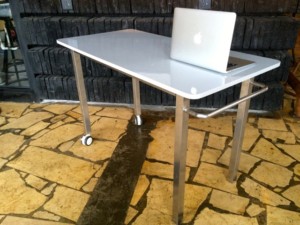
Adap-table Mini: Photo by Dylan Meikle © 2015
Keep in mind that Phillip works in spaces that have the Adap-table. If you haven’t seen this “dynamic tool” in action, check this video out.
When asked about the pressure points, or the snags to watch out for Phillip reported that from his perspective it was “very, very hard” to see any negatives when it comes to the introduction of whiteboard tables. He was able to offer the caution that just like any wow-factor device, initial overuse due to enthusiasm can occur. Additionally, some educators seem to embrace the possibilities of writeable tables like the Adap-table more readily than others. Continued collaboration and communication between teachers as a school adopts writeable environments is key so that all faculty move forwards together. Augmenting the introduction of writeable tables with pedagogical professional development, for example those provided by Project Zero, would also seem like a prudent way of getting the most bang for your table bucks.
We’d Love to Hear from You:
What have your experiences been with introducing whiteboard tables into your classroom? Are you curious to learn more and have questions? I would be delighted to receive your comments here or on twitter @dylan_meikle




